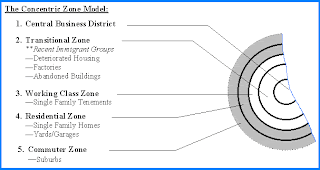This
week
I decided to comment on a fellow classmate’s blog. The blog post was about a
student’s trip from UCLA to Manhattan Beach via Sepulveda Boulevard. The blog
post depicts and details nearly every aspect of the student’s trip, ranging
from cleanliness of the city to the width of the road to the types of
buildings, stores and homes in the surrounding area. This is the comment I left
on the student’s page:
I
really enjoyed reading your blog especially because I am very familiar with
Sepulveda Boulevard, which made it easier to picture everything your blog illustrates.
To your credit, however, your strong and detailed description of your
surroundings would draw in readers with no previous exposure to Sepulveda. I
also liked that you noted when entering new municipalities, as it allows your
readers to more easily apply class concepts to your trip. Finally, I found the
way you kept track of and described the number of lanes open to drivers as you
progressed down Sepulveda Boulevard to be incredibly clever. While I’m not
entirely sure if it can be applied to a class concept, it is nevertheless a
very unique way of observing your surroundings and something I will certainly
make use of in my future blog posts.
The
one suggestion I must make, however, is to apply your trip to class concepts in
a more blatant way. For example, seeing as you were detailing some of the
obvious differences between the different cities you passed through, it seems
appropriate that you apply Robert E. Park’s theory that, “The City is a mosaic of little worlds which touch but do not
interpenetrate.” While there
may or may not be evidence to support his belief, it seems to be a good
starting place when applying class concepts to your trips. Alternatively, since
you were keeping track of the economic culture of each city, both in terms of
municipal quality and economic foundation, it seems appropriate to apply the
idea of the post-metropolis that was covered in class. Because it appears that
you noticed the differences in economic strategy between each city, that is
whether the city was largely occupied by businesses in the information sector
or businesses based around the idea of consumerism, such as shopping centers, perhaps
you could discuss the way this differentiation relates to the concepts of
decentralization and automobility that are the hallmarks of the post-metropolis
city which Los Angeles embodies. Regardless, I thoroughly enjoyed reading your
blog and I hope these suggestions help with your future posts. Happy blogging!





